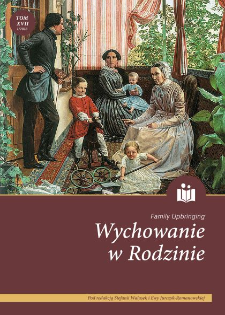Dzieci cudzoziemskie w polskiej szkole. Portret(y), wyzwania i problemy
Foreign children in the Polish school. Portrait(s), challenges
and problems
Author(s): Małgorzata H. HerudzińskaSubject(s): History, Social Sciences, Education, Sociology, Social history
Published by: Zakład Historii Edukacji w Instytucie Pedagogiki Uniwersytetu Wrocławskiego
Keywords: migrations; foreign schoolchild; multiculturalism
Summary/Abstract: Aim. School represents a specific cultural borderland, where the particular emphasis should be put on the analysis of the teachers, foreign schoolchildren and their parents as well as other schoolchildren. All this raises many questions. In this paper there is an attempt to answer several of these questions: How are the legal arrangements are adjusted to the foreign schoolchildren presence in the Polish educational system? What kind of competences are required to work with a foreign child? What kind of tasks and problems are imposed on teachers in the presence of foreign school child in the classroom? Are teachers prepared to work with them? What is the scope of such work (e.g.emotional contact with schoolchildren, capability to assess them, to help them study)? When do teacher feel the need for support in work with such schoolchildren? What kind of need is this? What could enhance the integration of foreign and Polish schoolchildren? What are the possibilities for improvement of the cooperation between school and parents of the foreign schoolchildren in teachers’ opinion? Methods. Desk research (i.a. legal documents, reports) and elicited data research (research of teachers’ opinion of foreign students, conducted in the public primary schools in urban and rural environments; the selection of schools – targeted; the research tool – survey questionnaire), Results. The list of problems and difficulties in education of foreign schoolchildren is long, and it is not easy neither to finalise it nor to set them in order of importance. Among them there are: language barriers; lack of competences or lack of their developmentthat allow teachers to work with a foreign schoolchild; foreign schoolchildren assessment issues; intercultural openness or closeness of local environment (includingschool); psychological and developmental determinants of a foreign schoolchild. Conclusions. Foreign schoolchild is still under an ongoing diagnostic process thanis diagnosed definitively. Polish schools usually have no experience in the field of work with the foreign schoolchild – the multiculturalism scale of our educational institutionsis not very successful. Even if they have it, support for foreign schoolchildren still requires reorganisation and improvement (despite all the actions taken), therefore systematic study of these issues is indisputable.
Journal: Wychowanie w Rodzinie
- Issue Year: XVII/2018
- Issue No: 1
- Page Range: 187-209
- Page Count: 23
- Language: English, Polish

